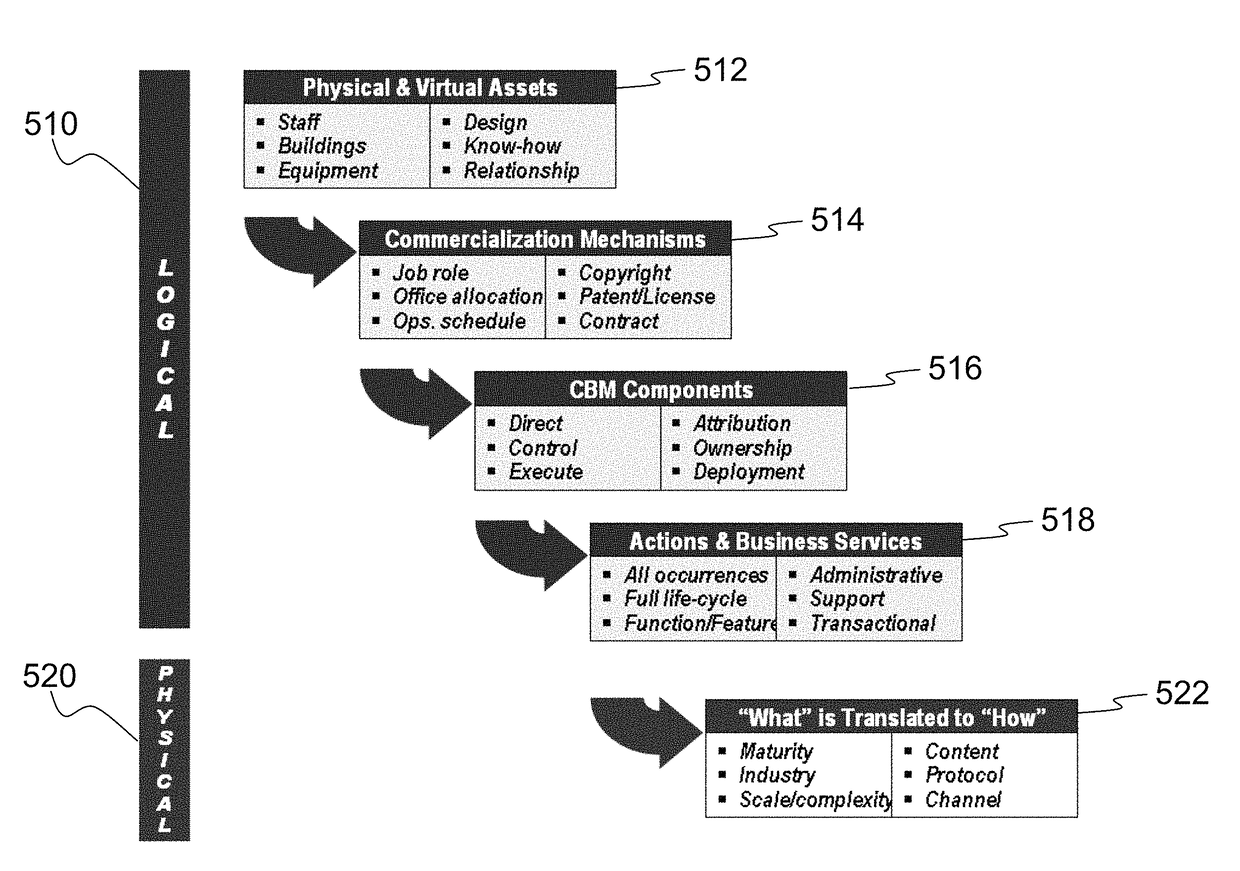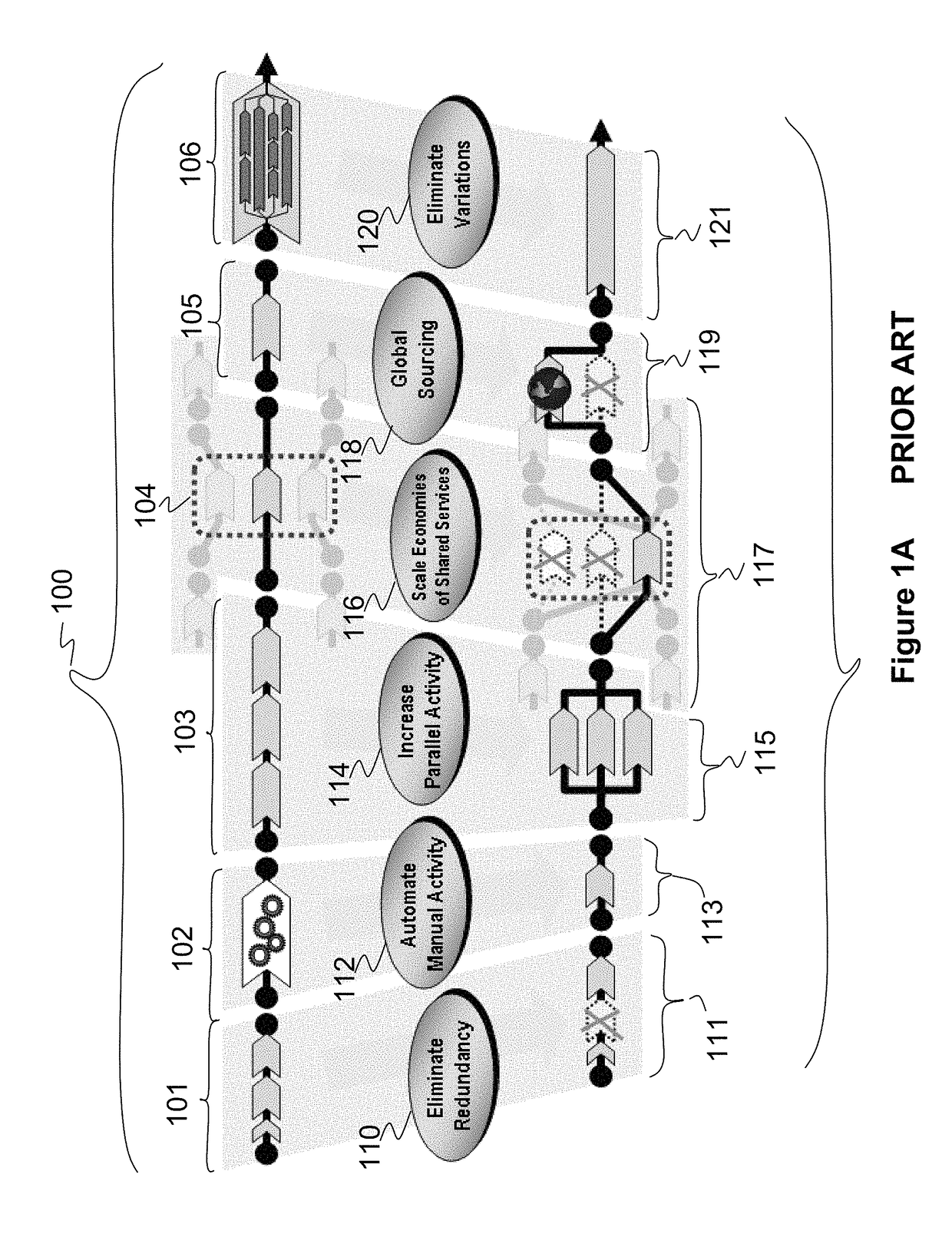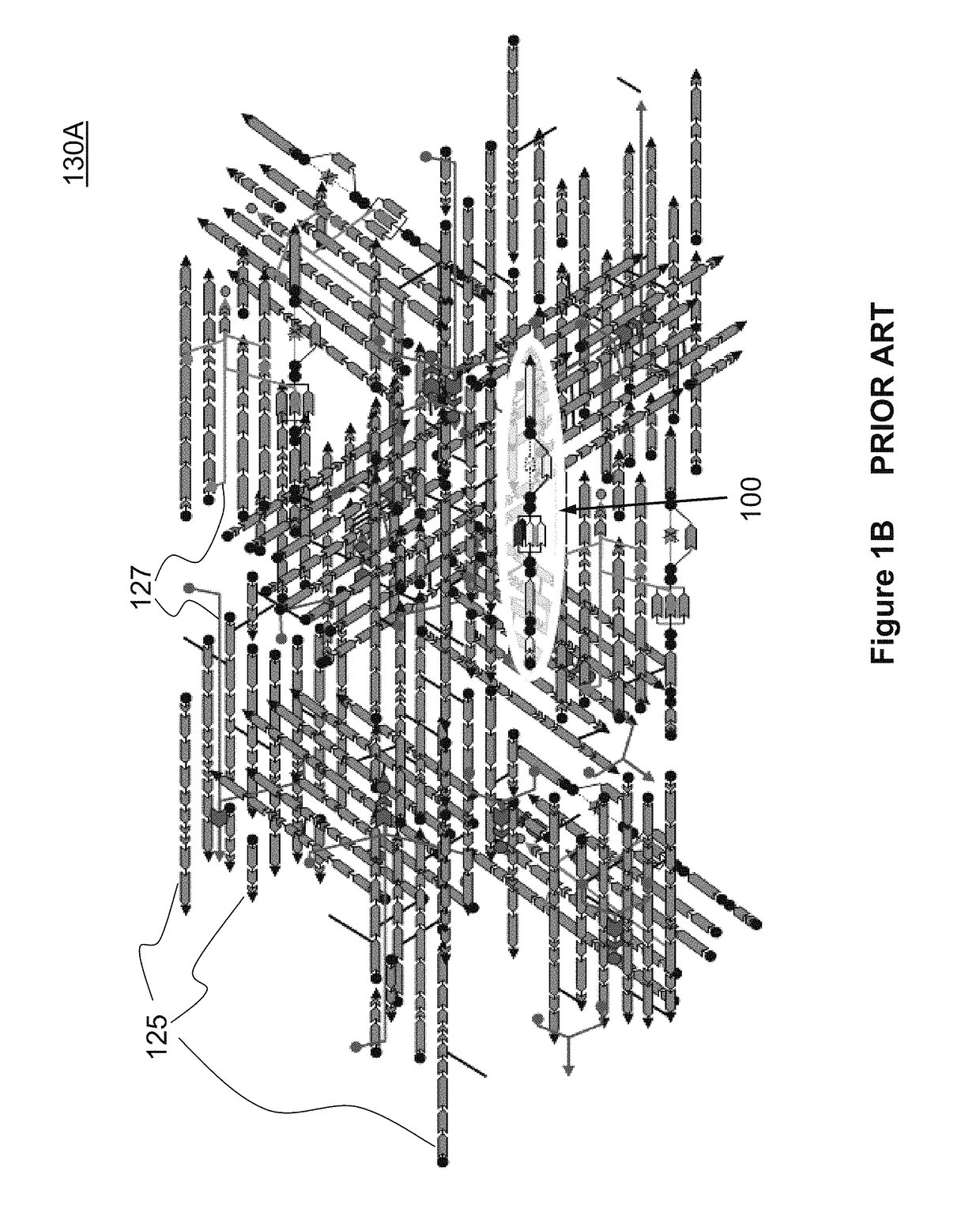System and method for assembly of business systems from reusable business control elements in an asset based component business model architecture
a business system and business control technology, applied in the field of business architecture, can solve the problems of not being able to handle the association of a room with a building in the commercial activity so easily, and the design of business is clearly more complex than its electrical wiring
- Summary
- Abstract
- Description
- Claims
- Application Information
AI Technical Summary
Benefits of technology
Problems solved by technology
Method used
Image
Examples
Embodiment Construction
[0043]The inventor of the present invention also invented the co-pending invention described in U.S. patent application Ser. No. 11 / 176,371 for “SYSTEM AND METHOD FOR ALIGNMENT OF AN ENTERPRISE TO A COMPONENT BUSINESS MODEL” (hereinafter termed “the above referenced foundation patent application”), whose disclosure is hereby incorporated by reference as foundational for the present invention in content and terminology.
[0044]The present invention uses a business design methodology that stipulates that commercial business activity can be modeled by first identifying a general collection of asset types, some combination of which is brought together to form an enterprise. The combination of asset types ‘owned’ or somehow made available to a business are each then manipulated in one or more generic ways in the execution of business, using structures referred to as ‘commercialization mechanisms’, that is, mechanisms through which an asset is made commercially useful to the enterprise in t...
PUM
 Login to View More
Login to View More Abstract
Description
Claims
Application Information
 Login to View More
Login to View More - R&D
- Intellectual Property
- Life Sciences
- Materials
- Tech Scout
- Unparalleled Data Quality
- Higher Quality Content
- 60% Fewer Hallucinations
Browse by: Latest US Patents, China's latest patents, Technical Efficacy Thesaurus, Application Domain, Technology Topic, Popular Technical Reports.
© 2025 PatSnap. All rights reserved.Legal|Privacy policy|Modern Slavery Act Transparency Statement|Sitemap|About US| Contact US: help@patsnap.com



